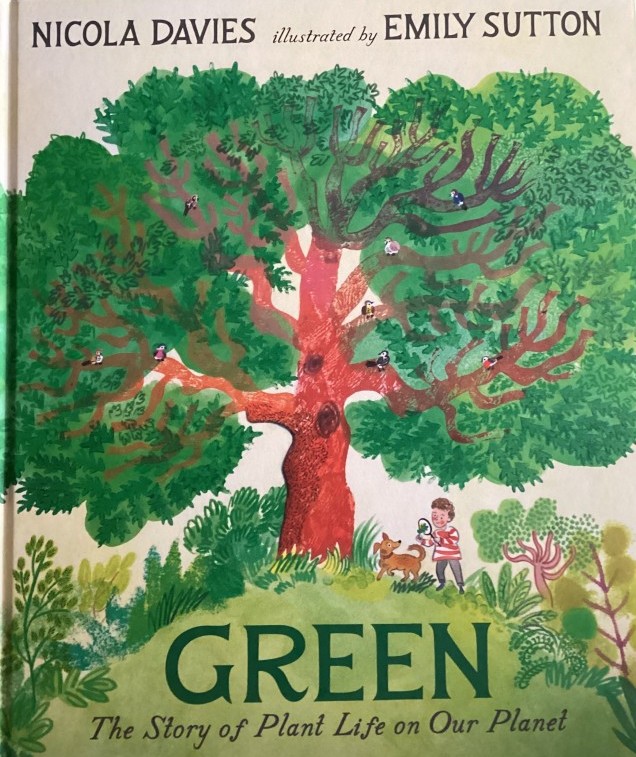Inspiring Young Readers
 posted on 25 Mar 2024
posted on 25 Mar 2024
Green: The Story of Plant Life on Our Planet by Nicola Davies, illustrated by Emily Sutton
Team the prolific and award-winning Nicola Davies with the wonderful Emily Sutton and the result just has to be excellent. This big format, generously illustrated introduction to the power and importance of plant life on our planet is no exception.
Starting by considering what seems to be a perfectly ordinary tree, Davies takes us deep inside the way the tree is an essential part of keeping the environment liveable for us human beings and all other living creatures. Its deep roots draw in water and nutrients while its leaves absorb carbon dioxide – and the result is oxygen.
There’s science here but science that can be grasped by the younger reader. The book introduces words like ‘photosynthesises and ‘respiration’ in a non-threatening way and the whole cycle of life is captured in easy-to-understand diagrams.
But this isn’t a biology text-book – it’s also the exciting story of how plants were central to the evolution of life on Earth. We zoom back to times before humans and animals when the world was covered in vegetation. Over millions of years, as plants died they fell to the ground and into swamps creating what we’ve come to call ‘fossil fuels’ – oil, coal and gas.
“Locked inside these fossil fuels was a huge store of carbon dioxide, as well as energy from sunlight. Human beings used this energy to create our modern world, burning coal, oil and gas to heat houses and power factories, and to fuel cars and planes.”
But, of course, we now know that there’s a problem with what we’ve been doing. The more carbon dioxide we release from these fossil fuels, the more it sits in our atmosphere like a huge blanket, warming the atmosphere. You know – ‘global warming’.
But Nicola Davies isn’t writing another message of doom. Plants, she insists, can continue to be our friends and help us out of our warming problems. Most importantly of all, they can “lock up carbon dioxide in their leaves and roots and branches.”
Forests, tropical forests, grasslands and prairies are all vital to the balance of the Earth and we have to protect them from destruction and over-exploitation.
And it’s not only the greenery on the land but in the sea too – and here we learn about ‘Phytoplankton’ – billions of microscopic plants in the oceans. But again, they can only do their job if we protect them from the pollution that we thoughtlessly dump into the sea.
Ultimately this book is an optimistic one – but it’s an optimism that can only be sustained if we take notice of the simple final message:
“…that GREEN is the most important colour in the world.”
Available now from Walker Books, you can get your copy from your local independent bookshop – who will be happy to order it for you if they don’t have copies on the shelf.
Terry Potter
March 2024